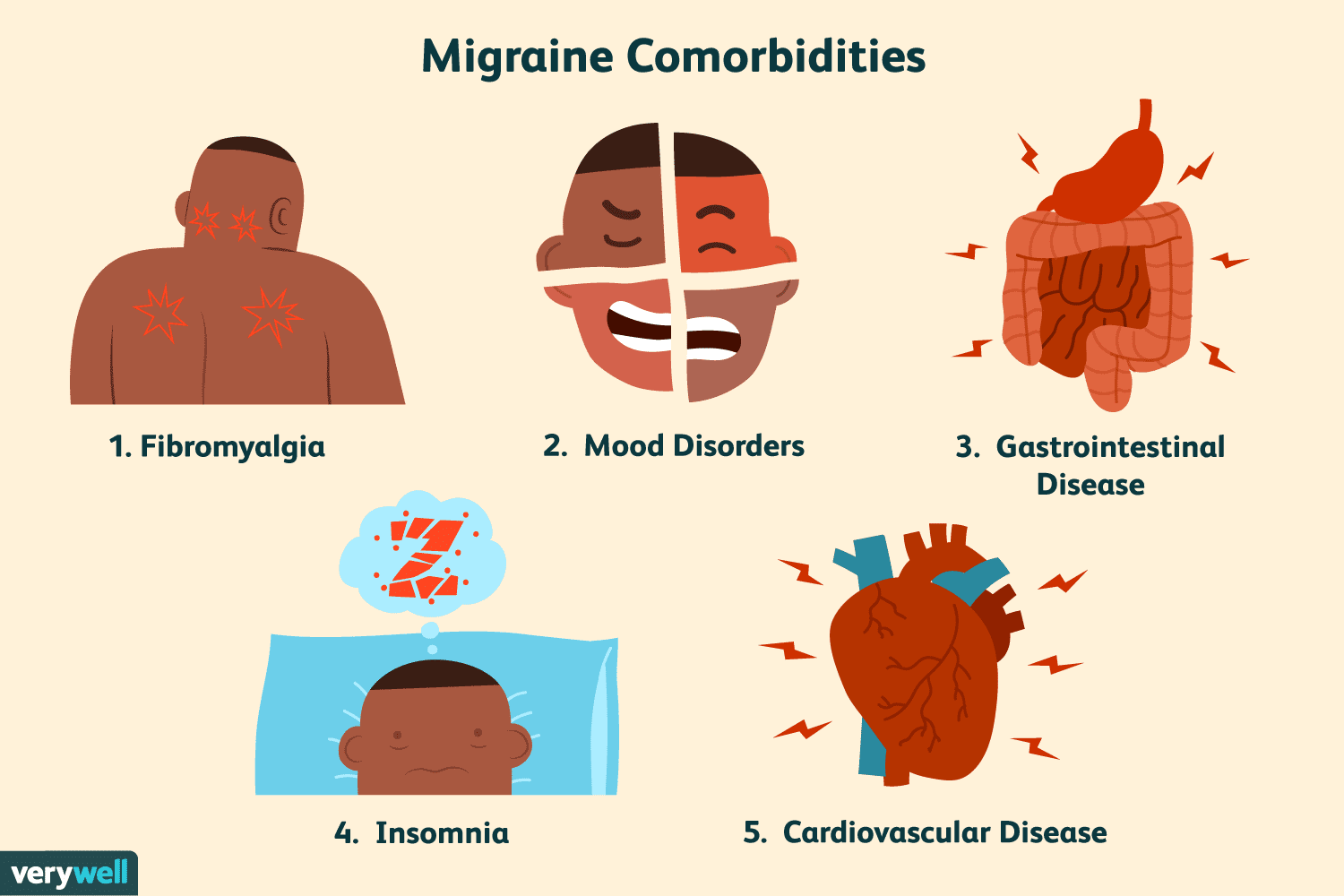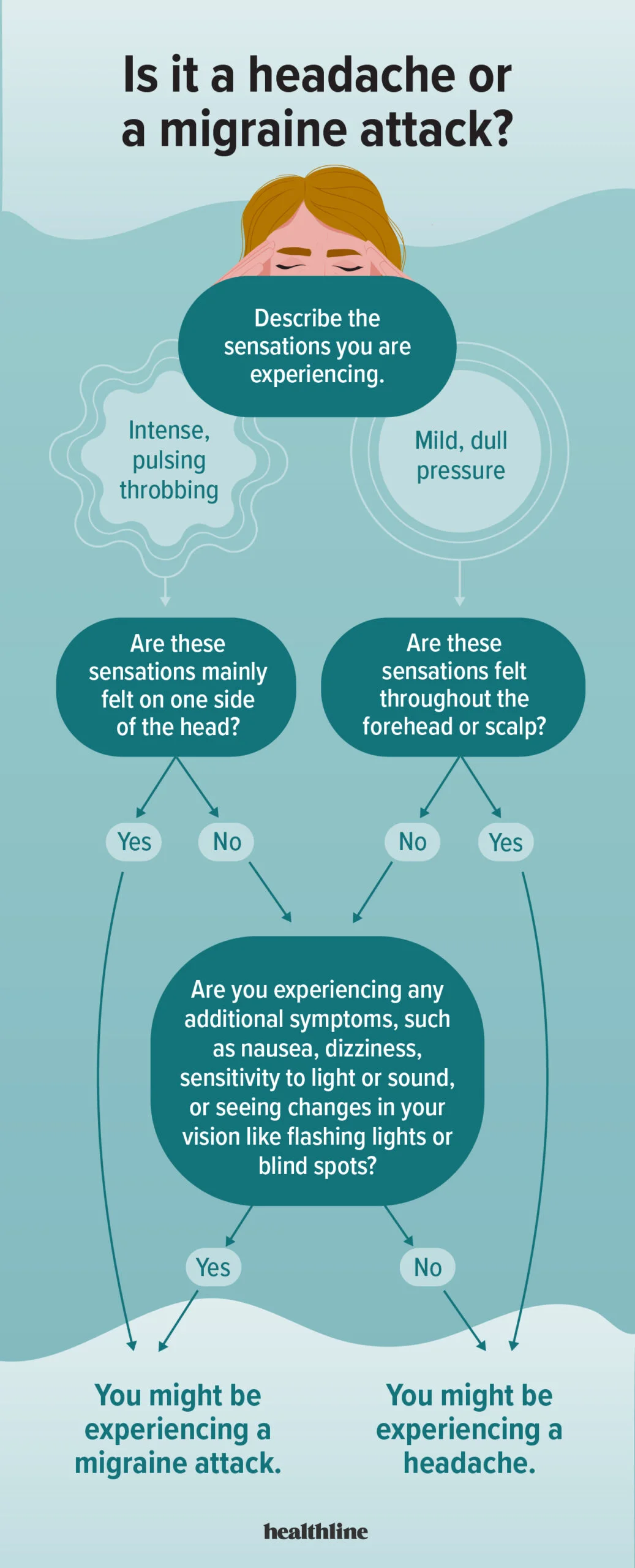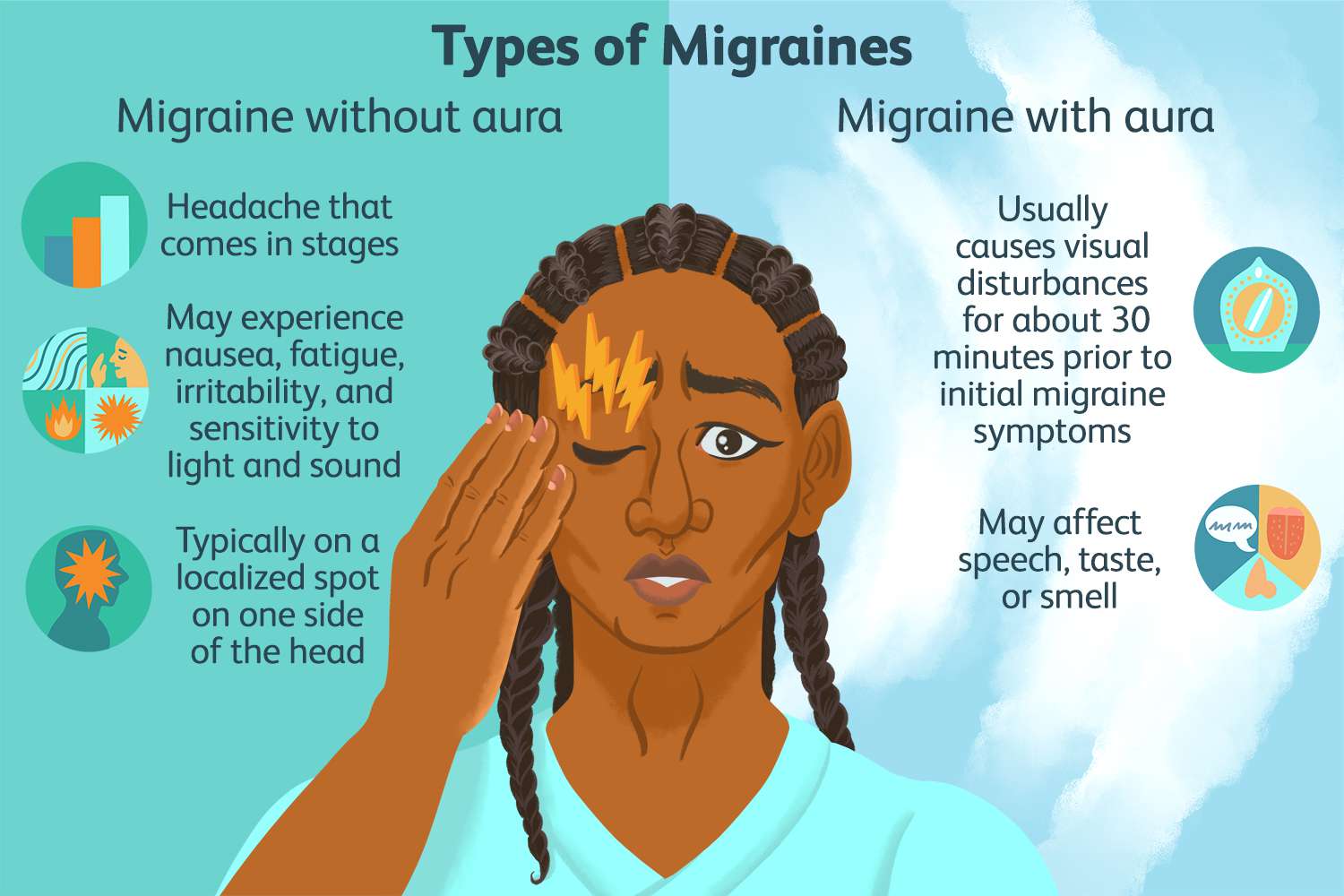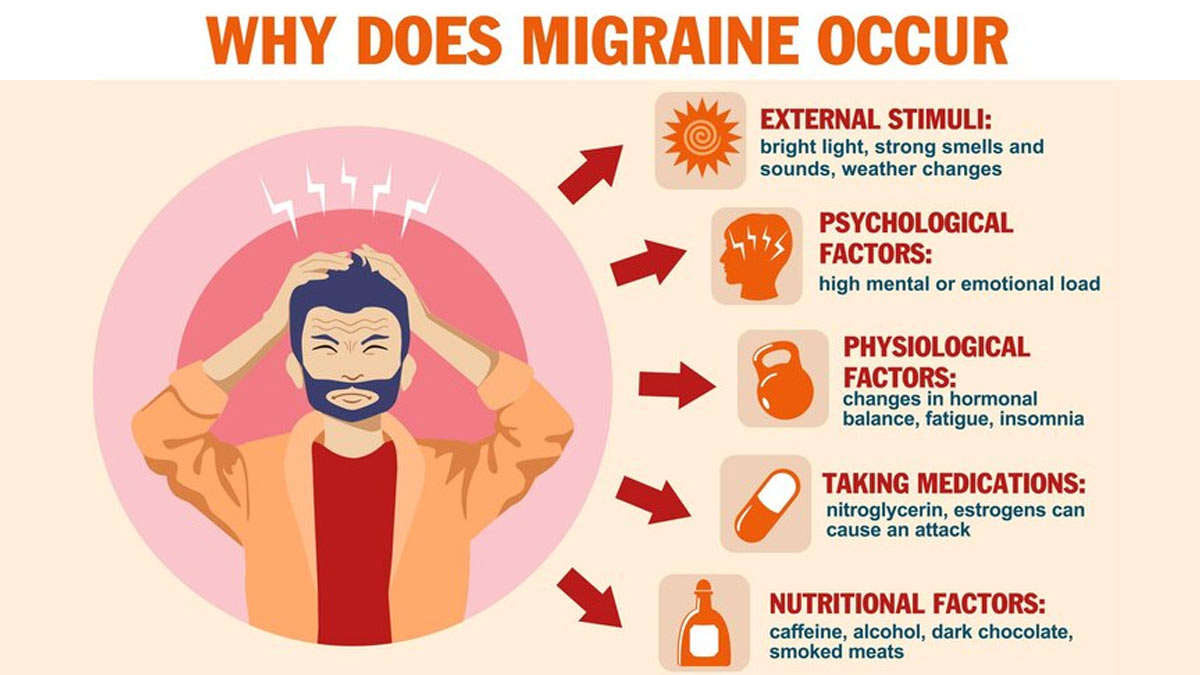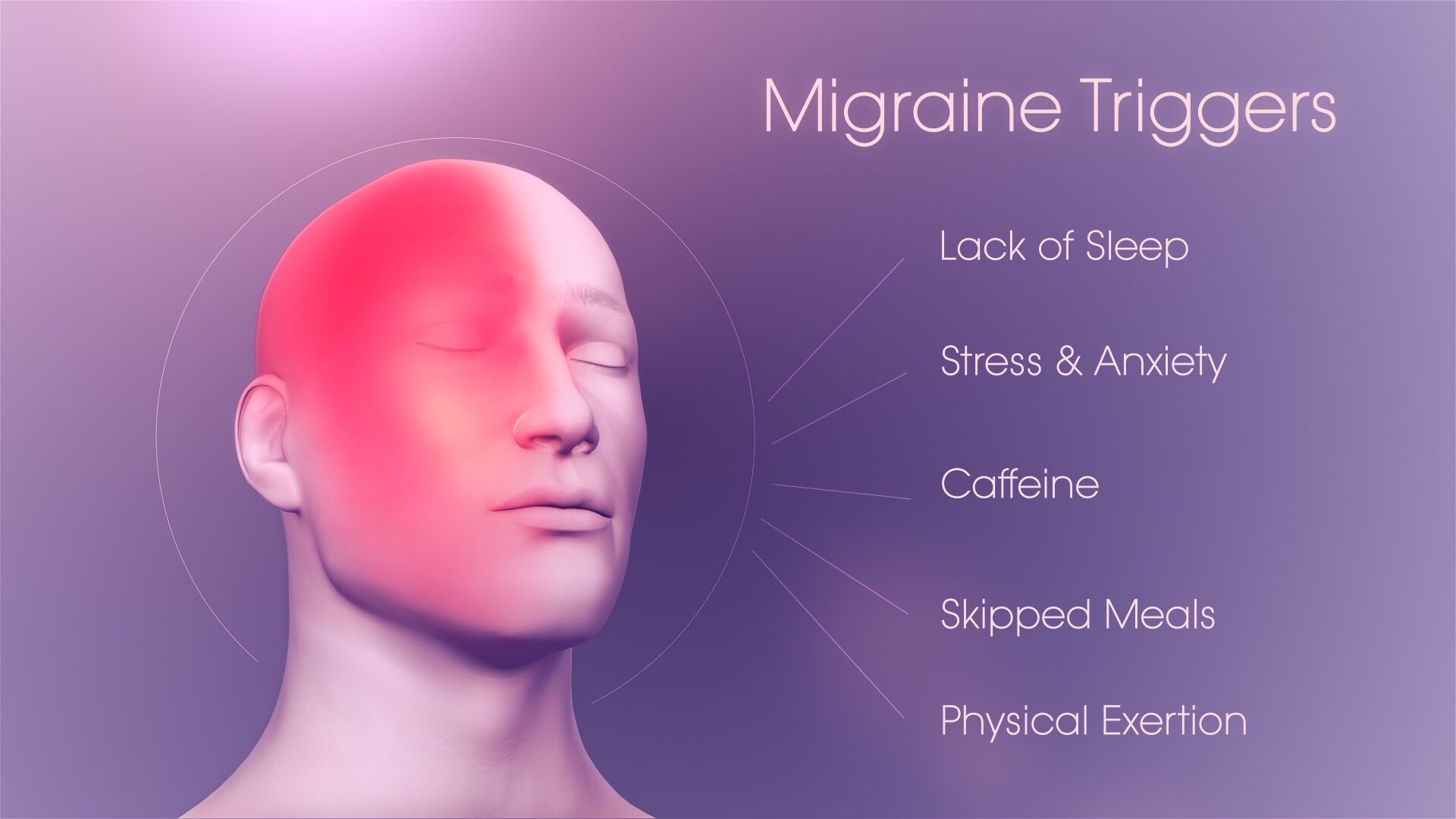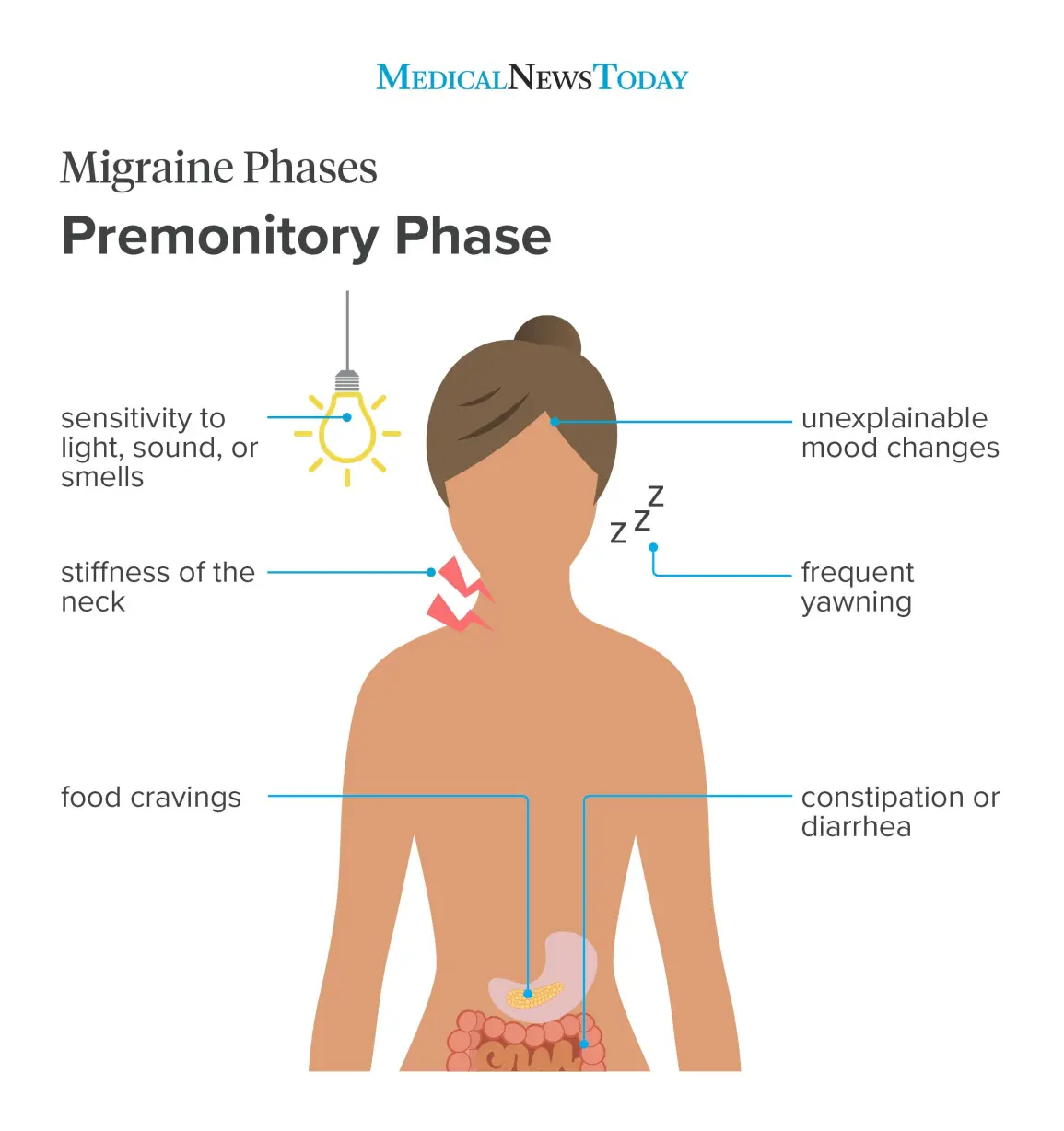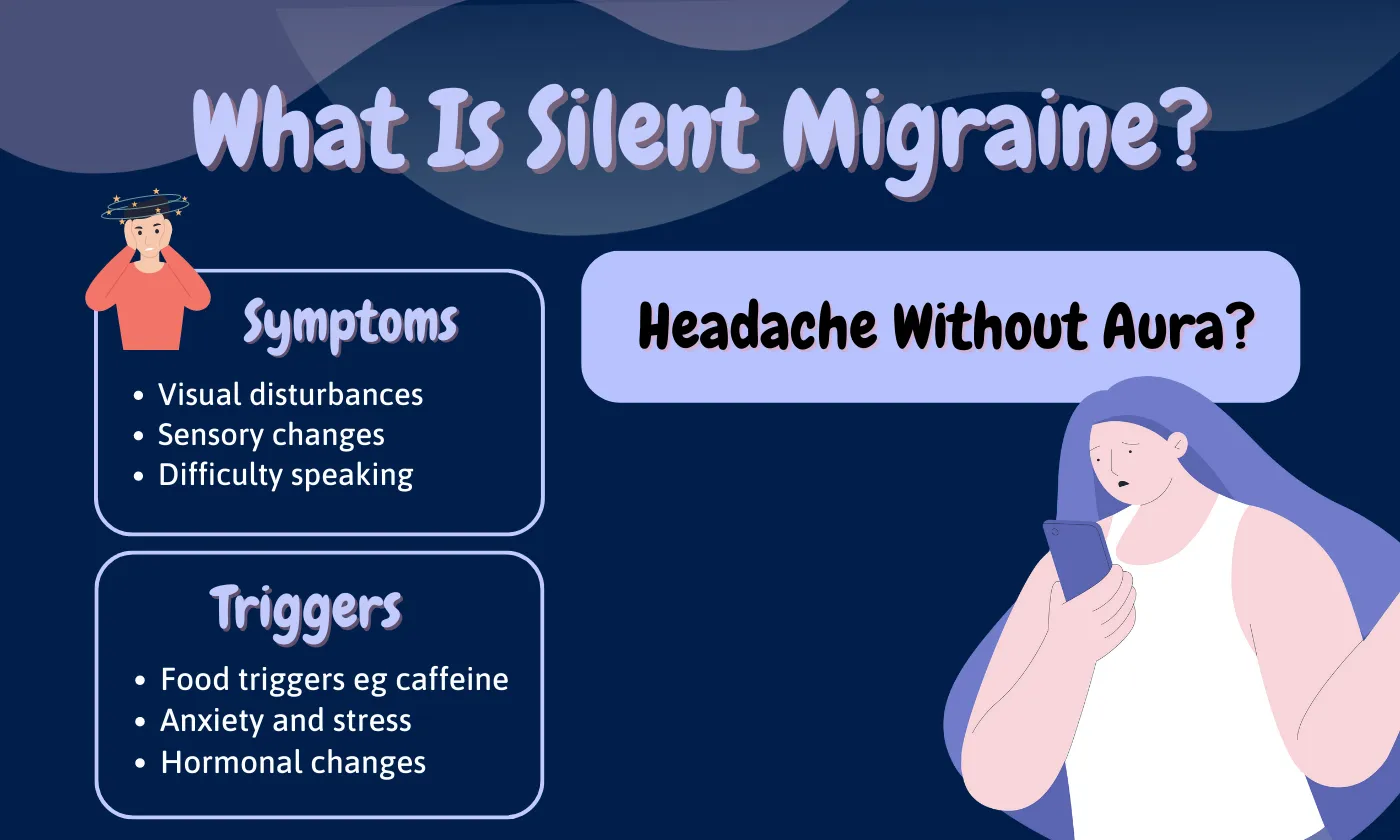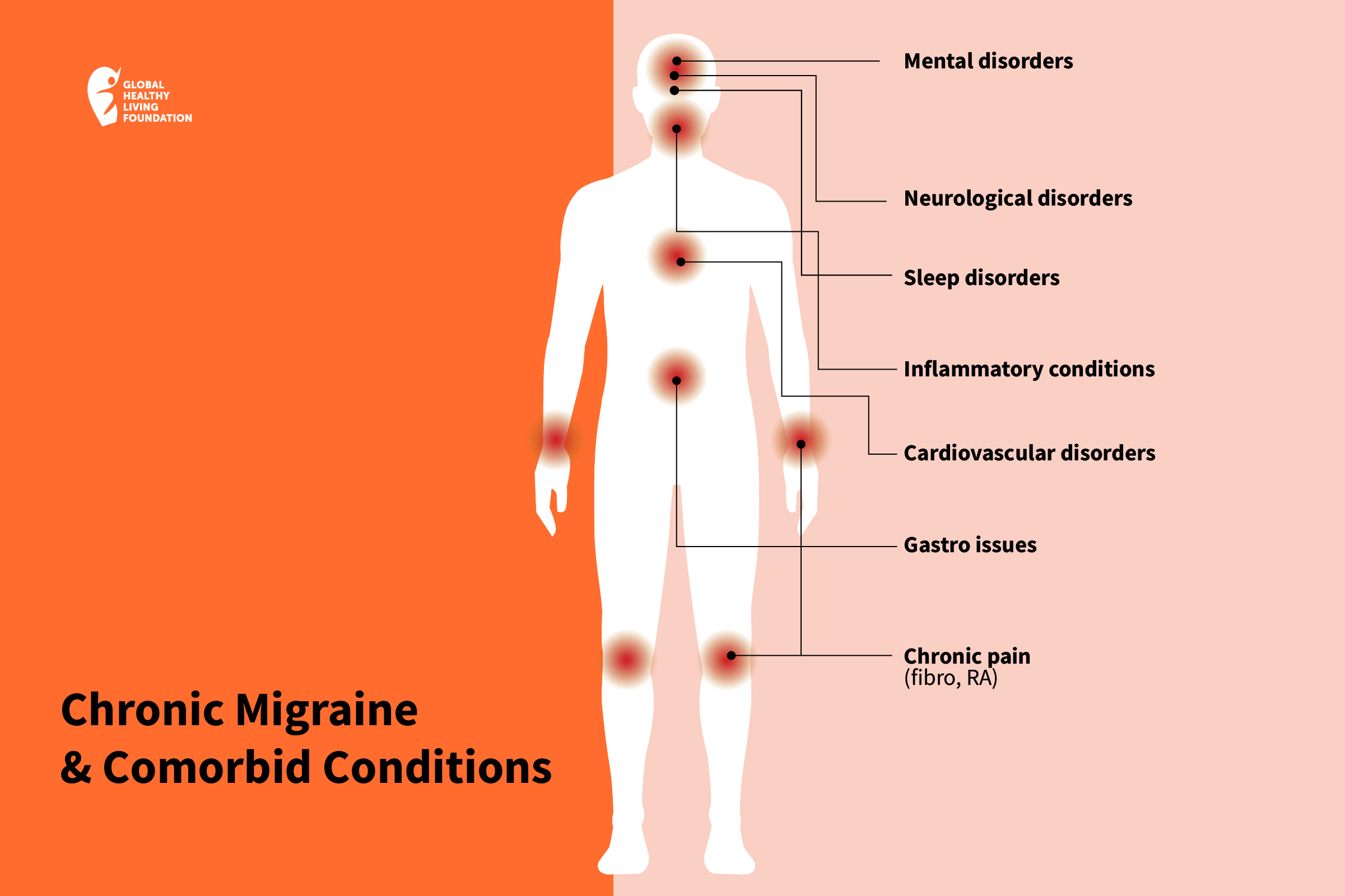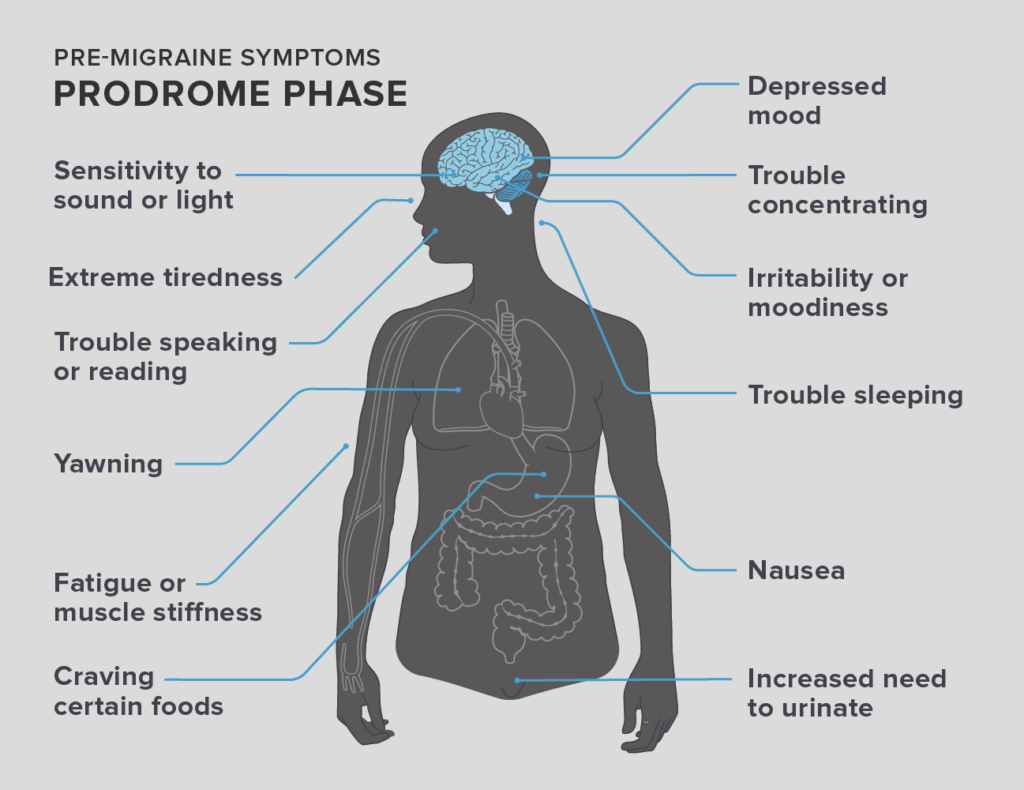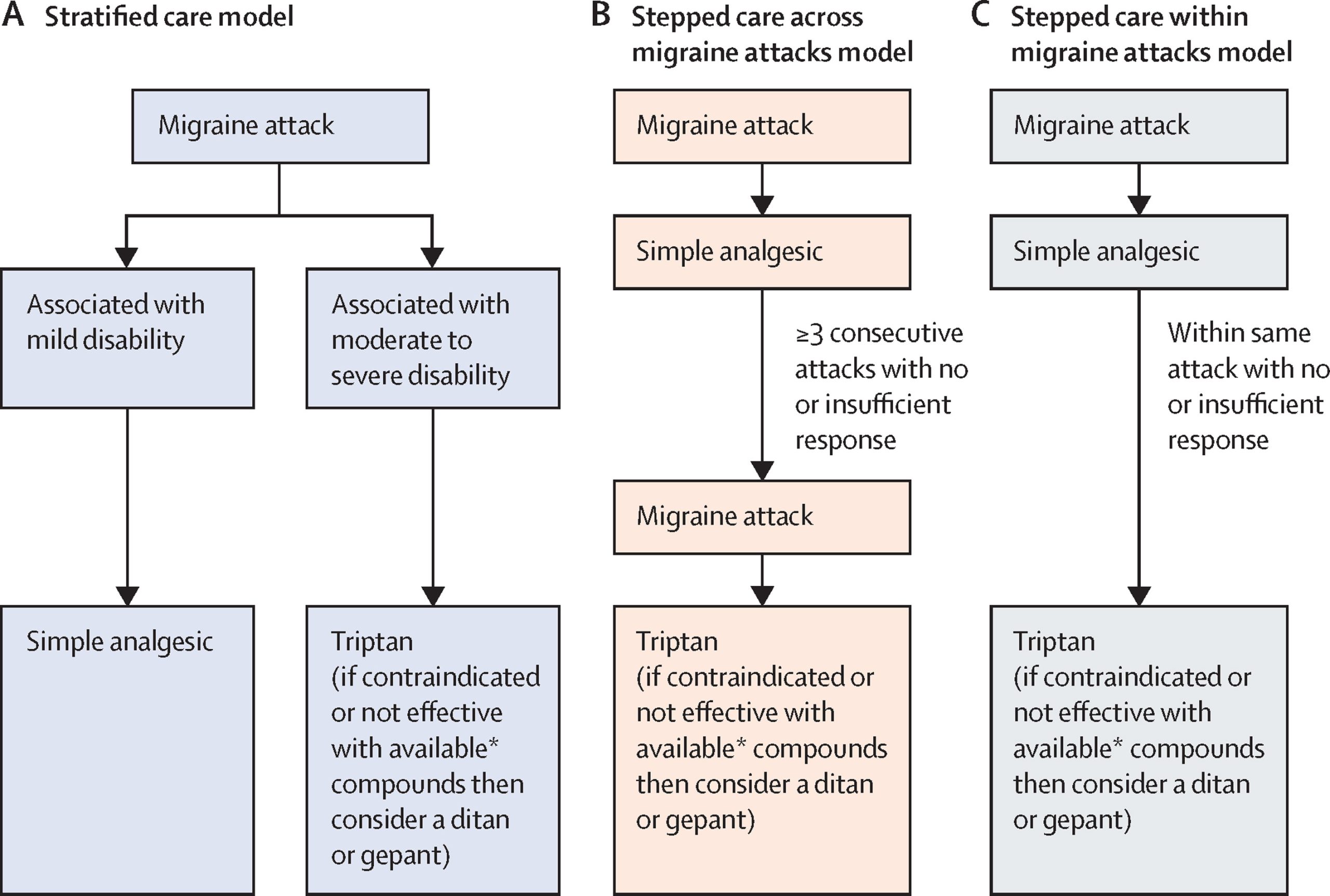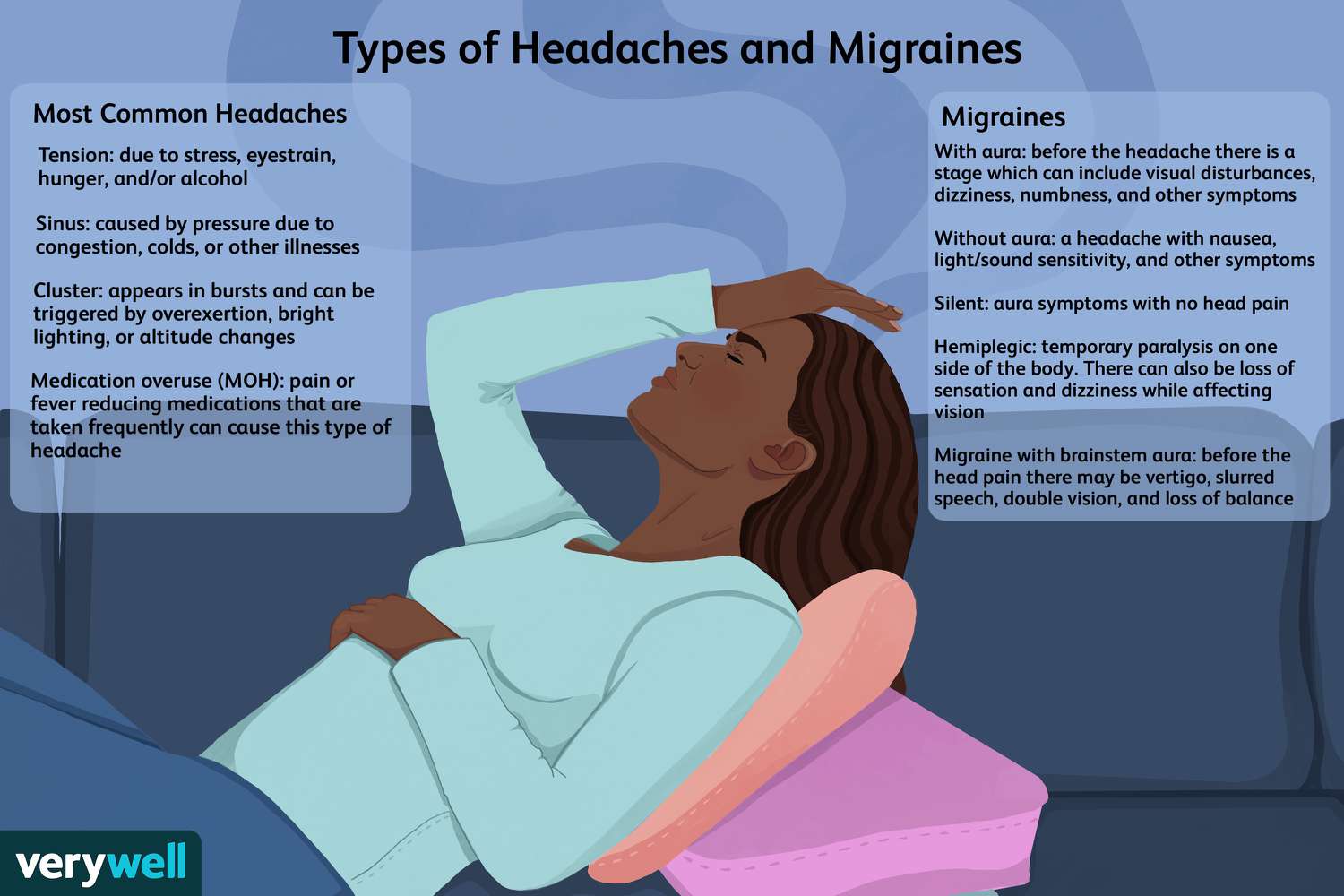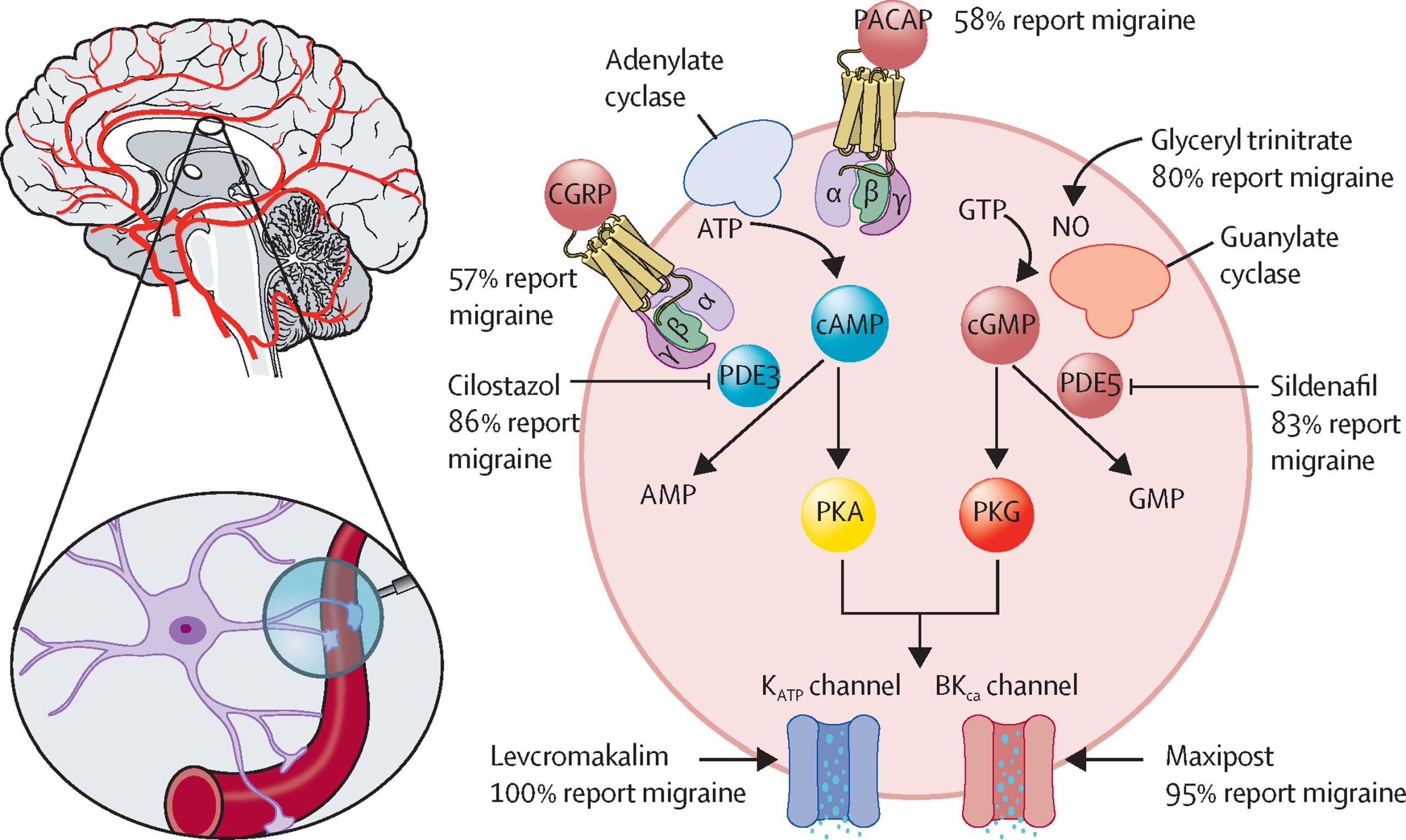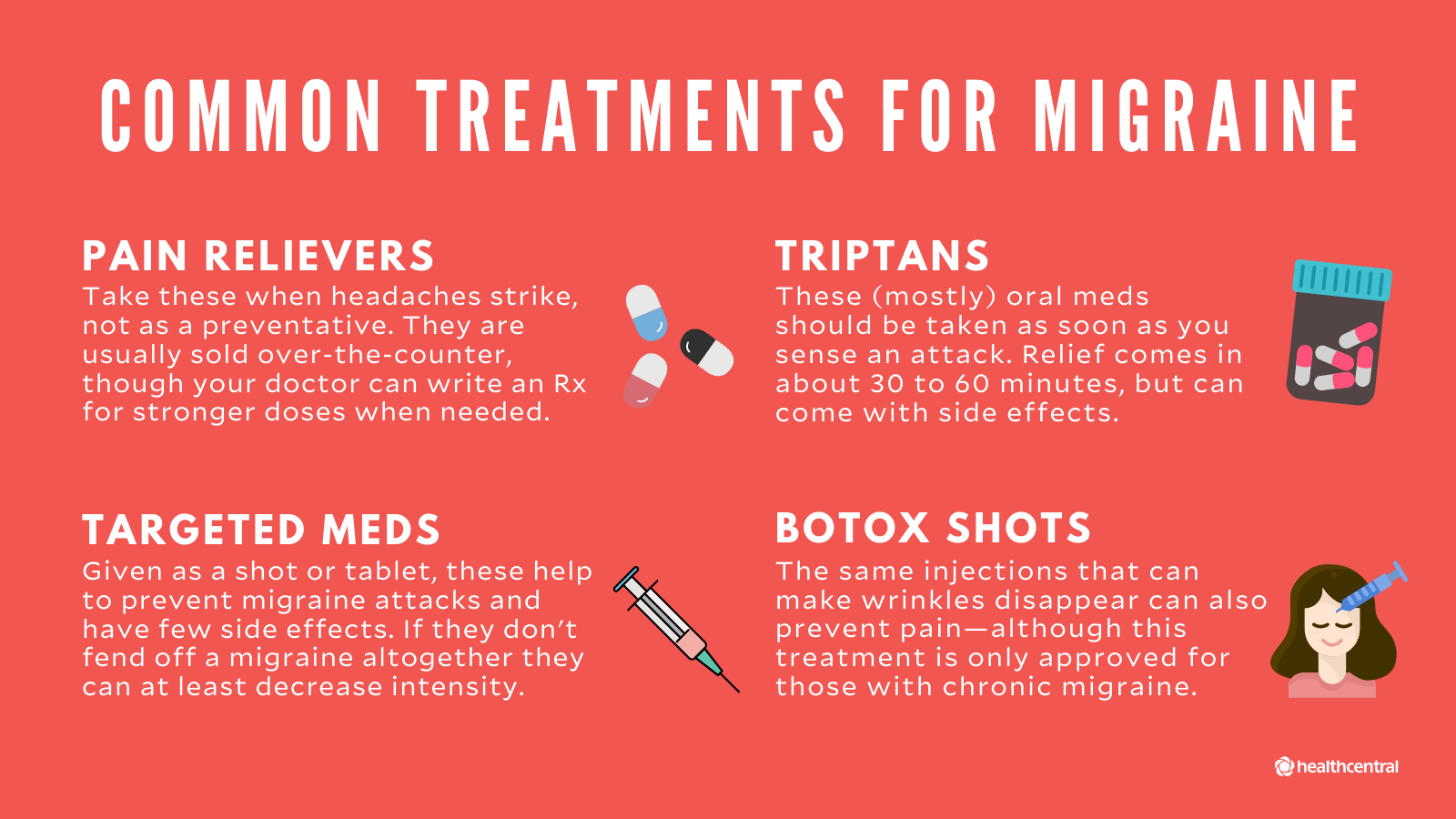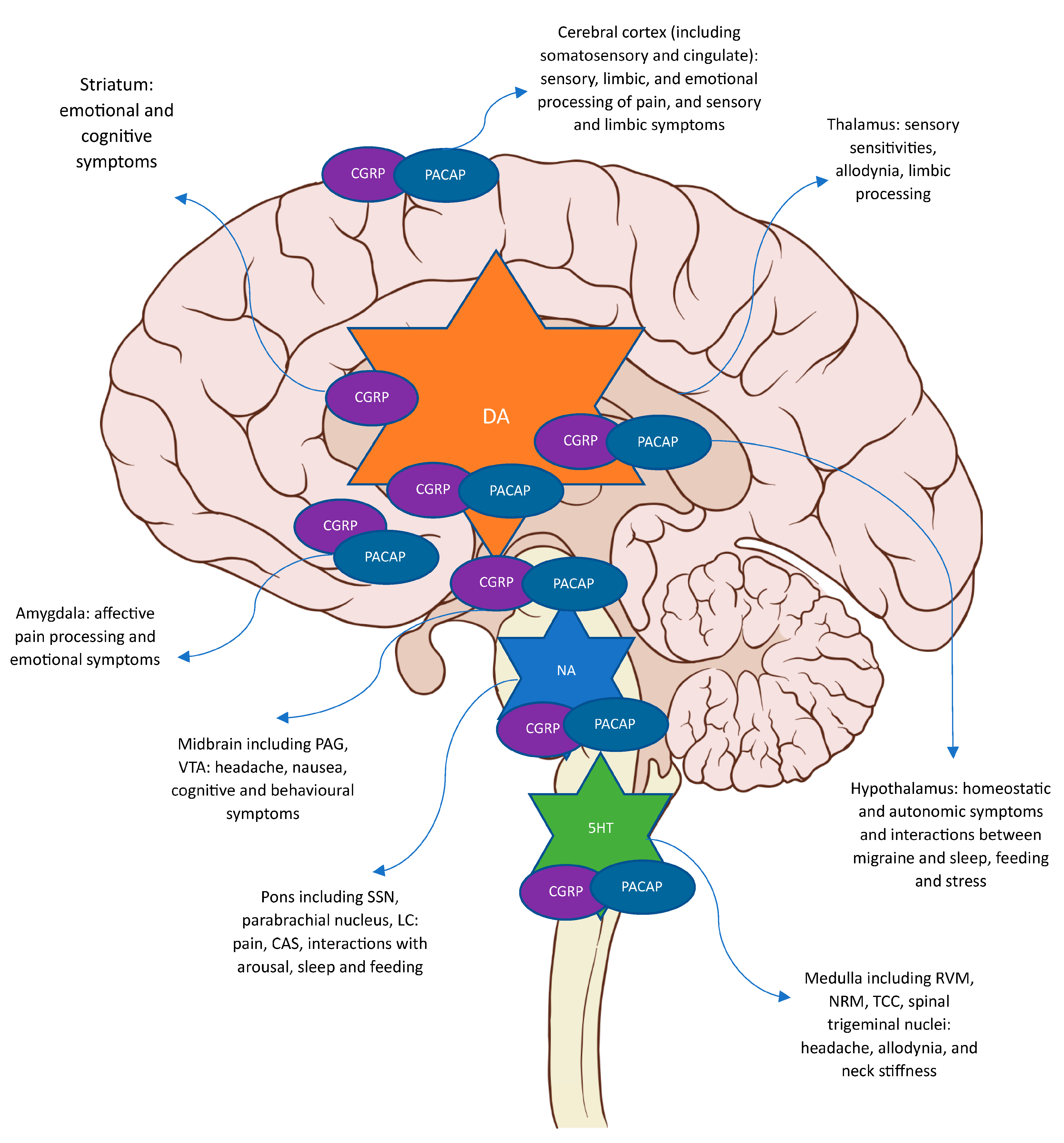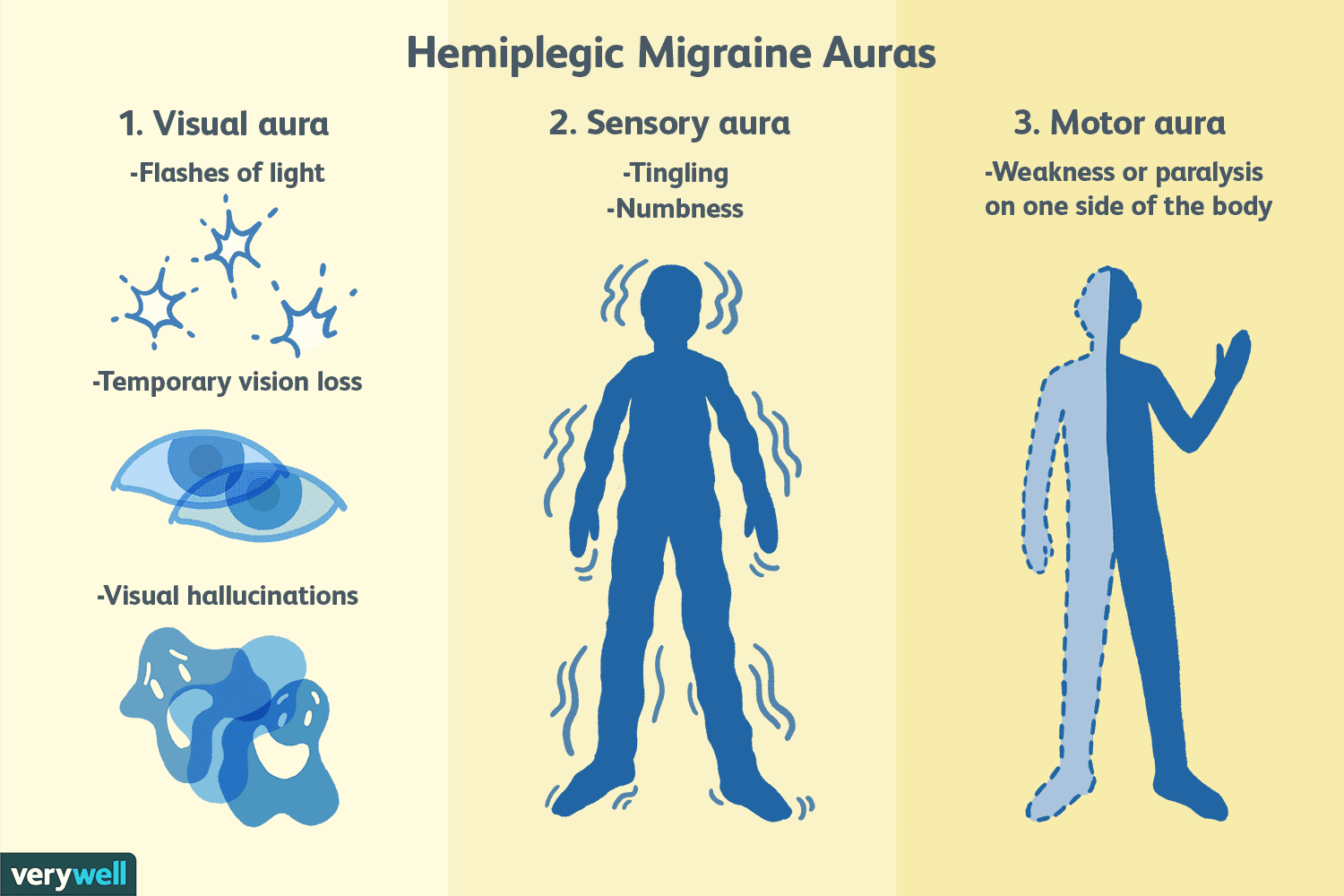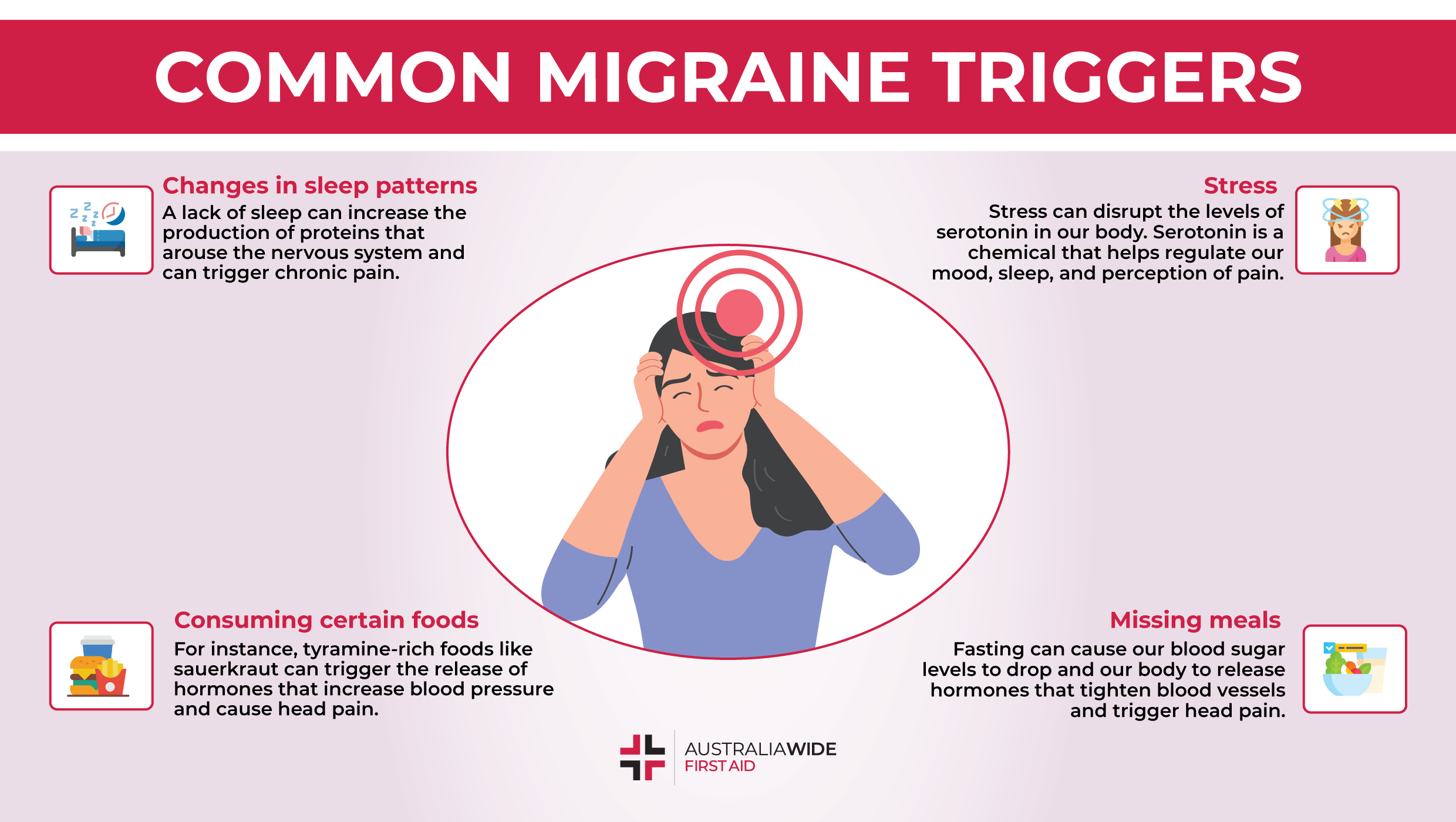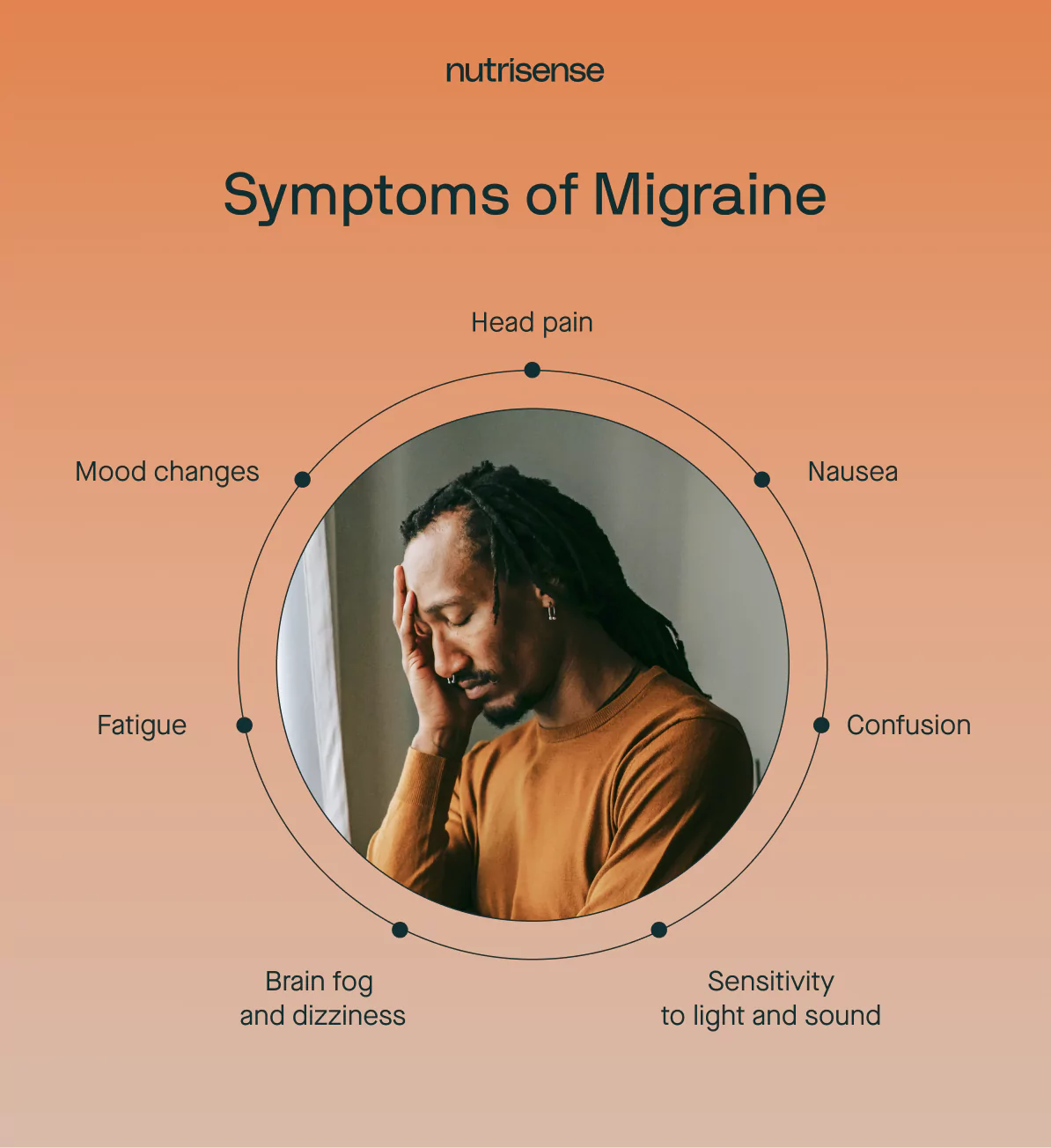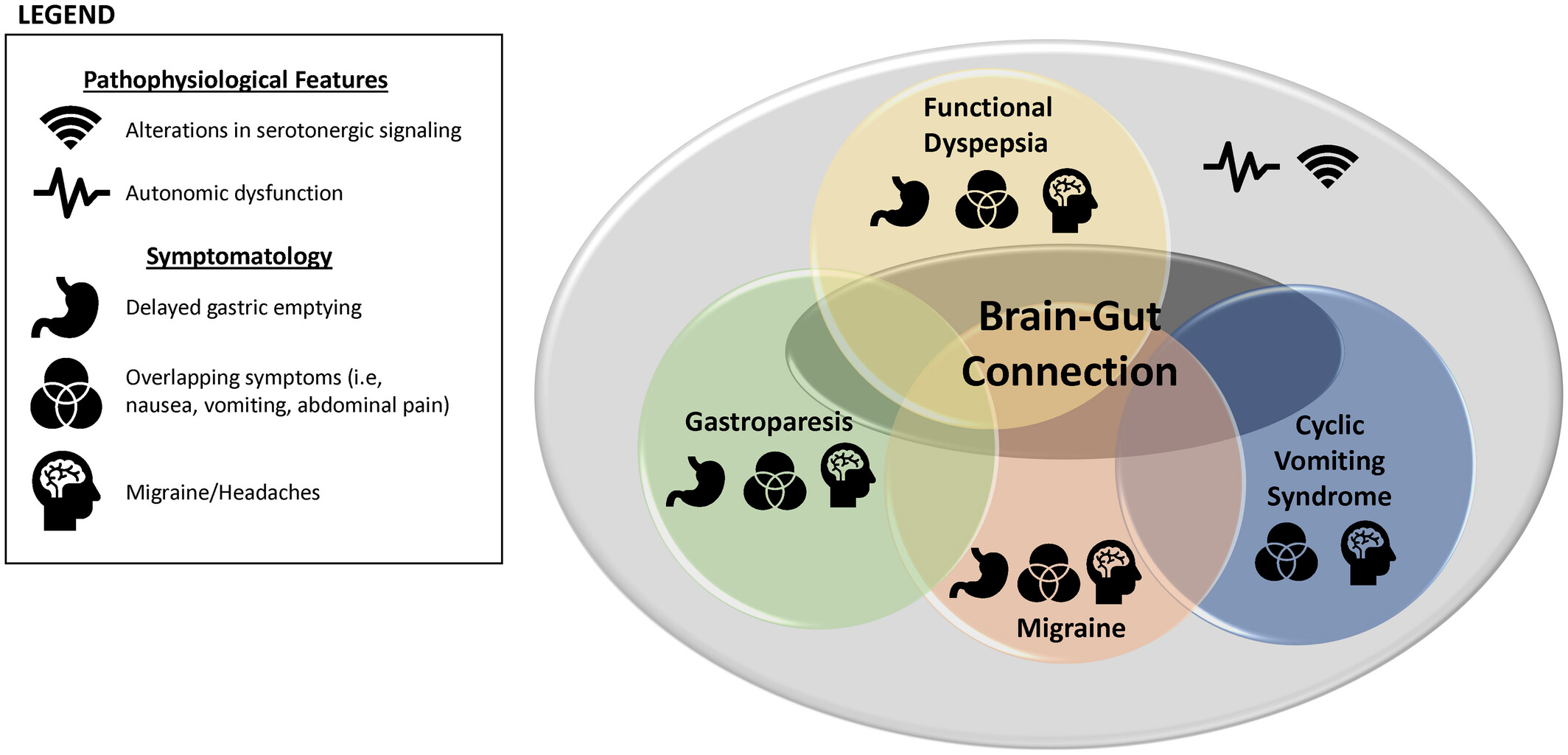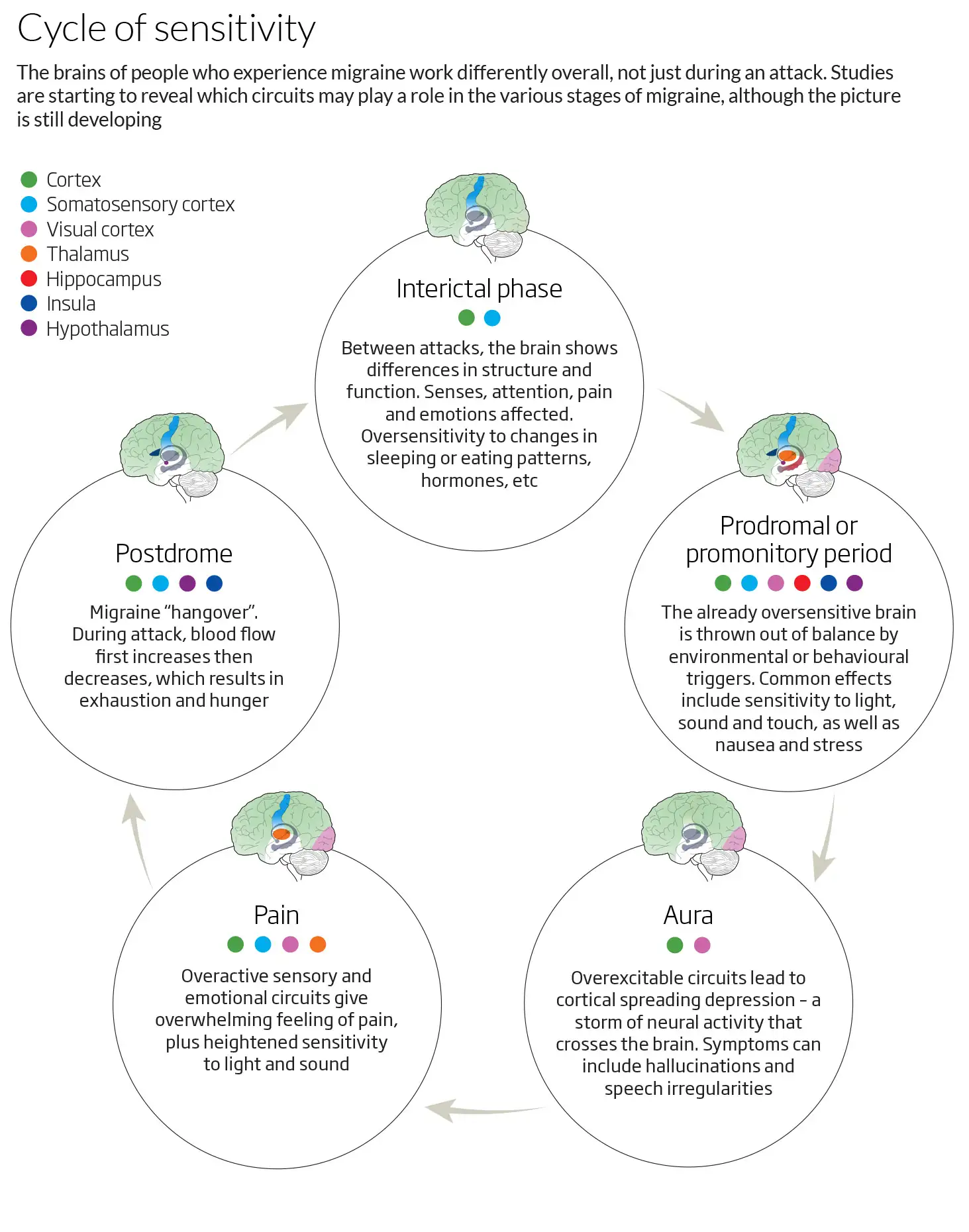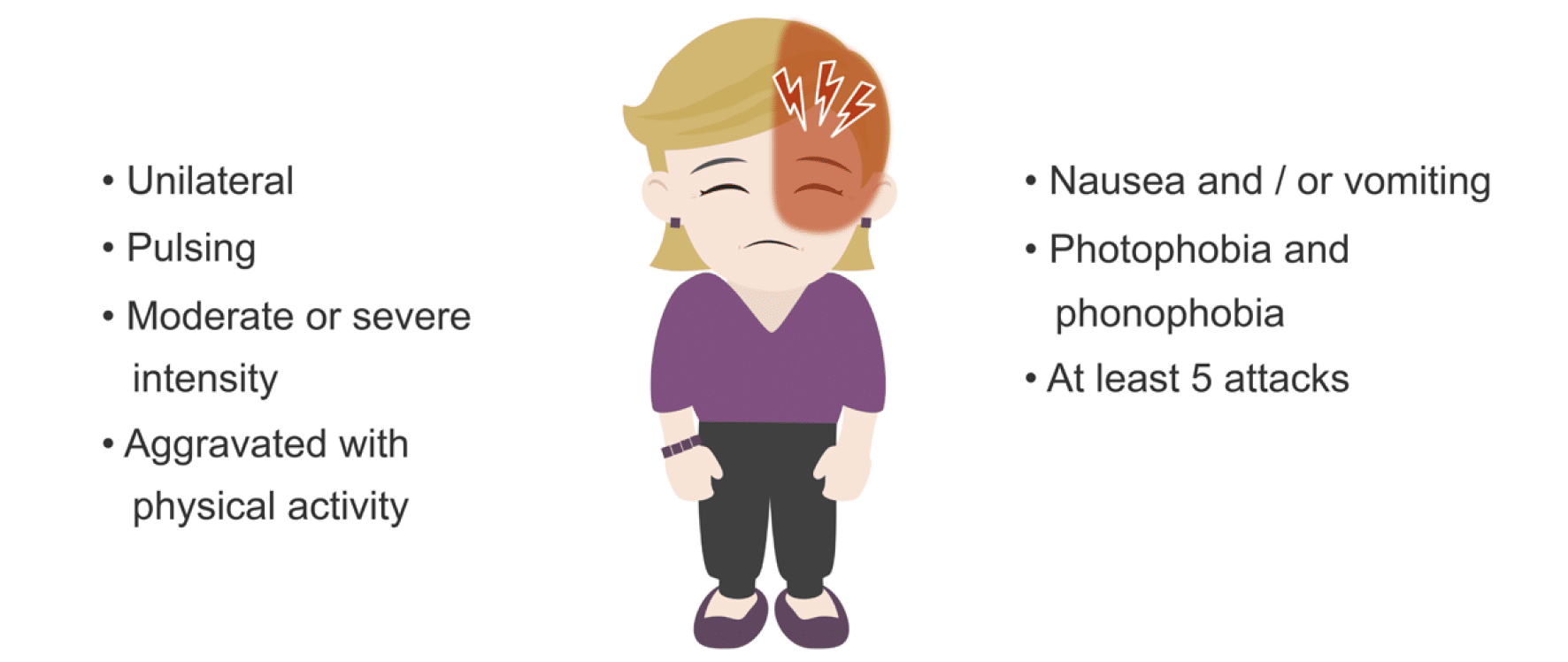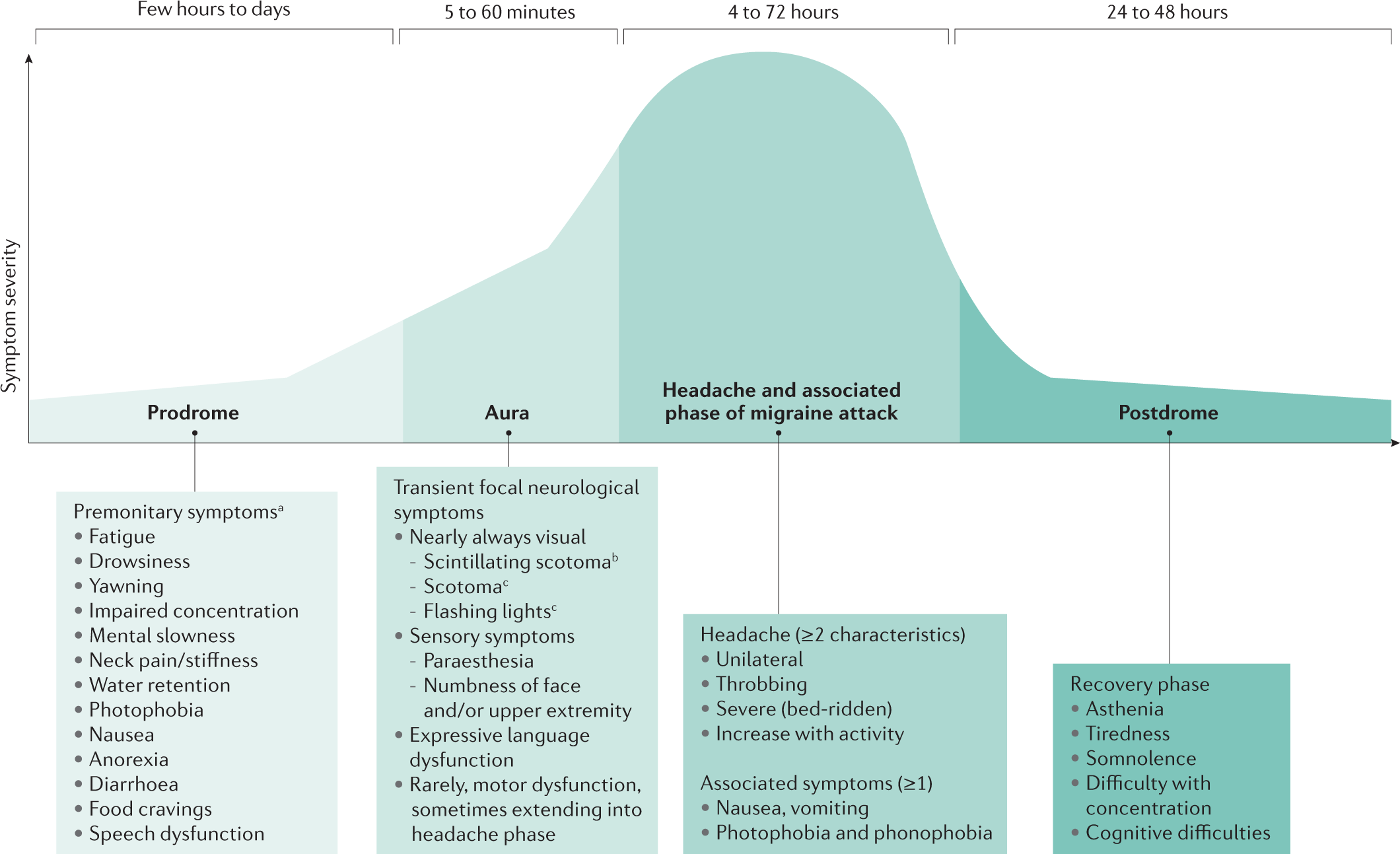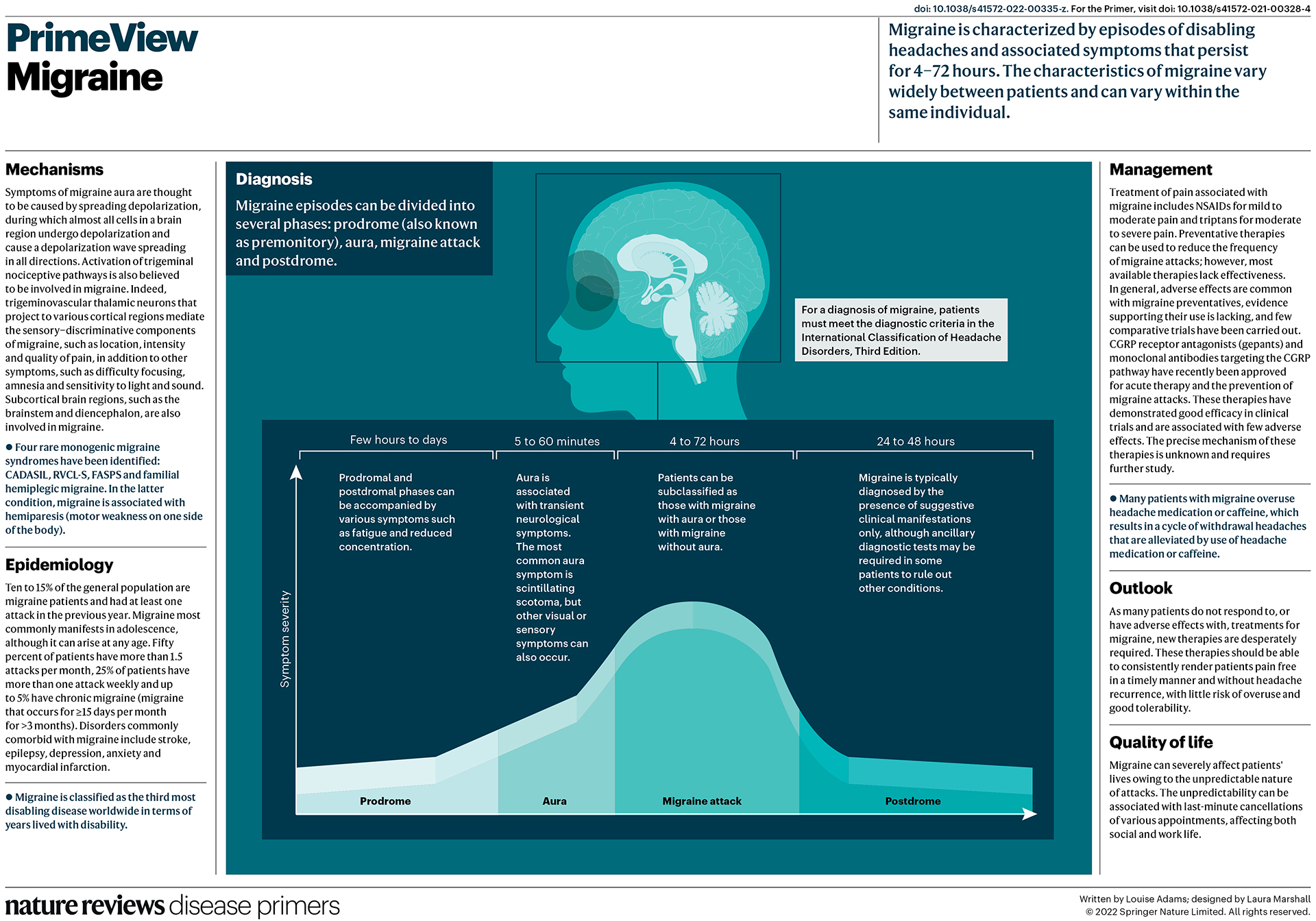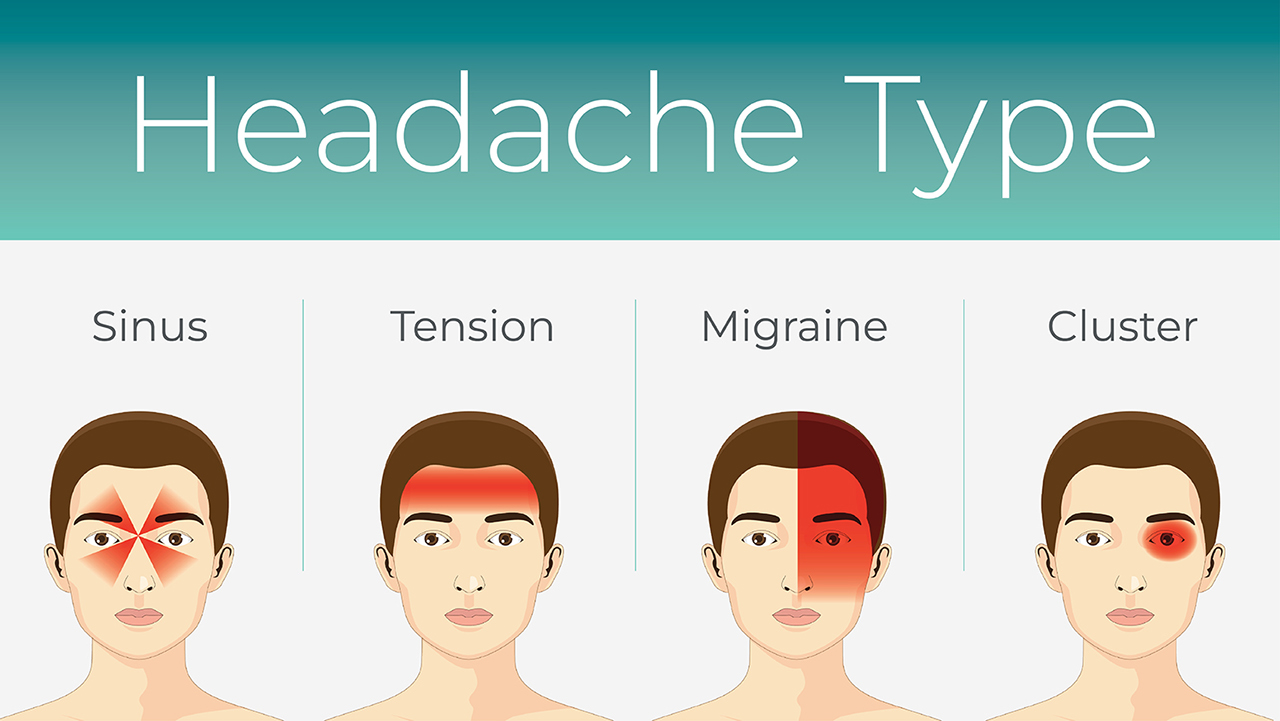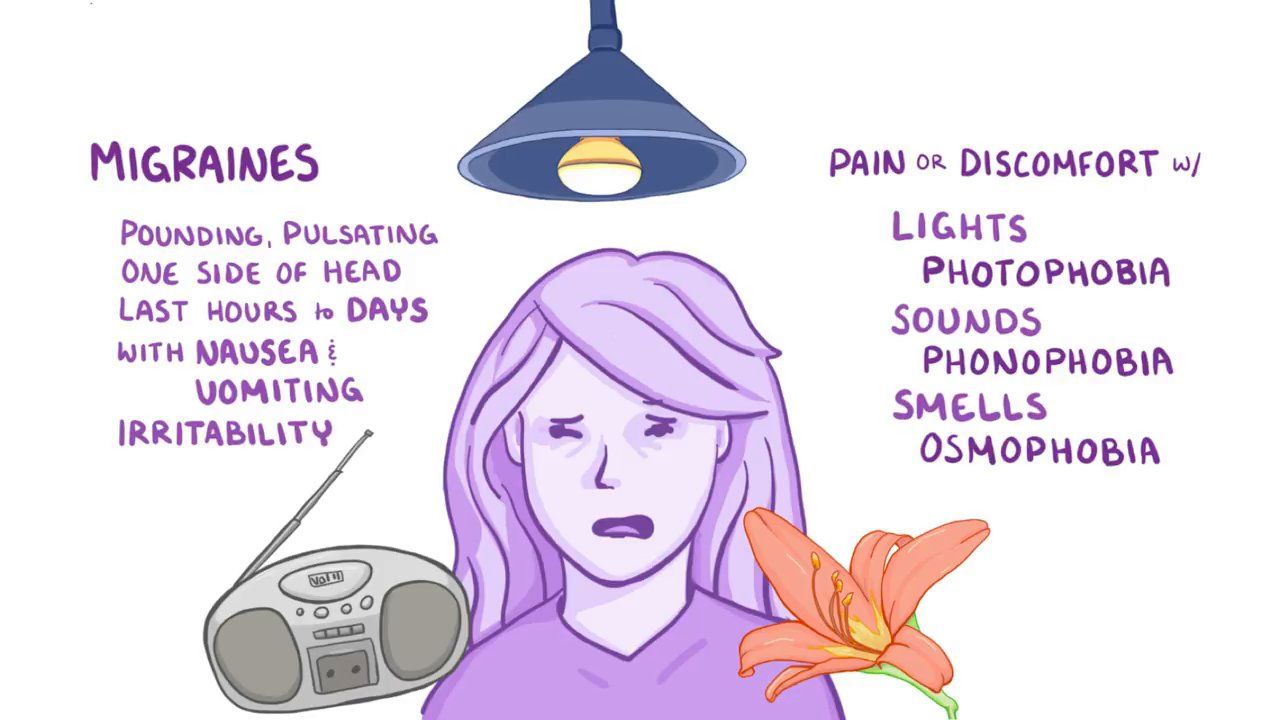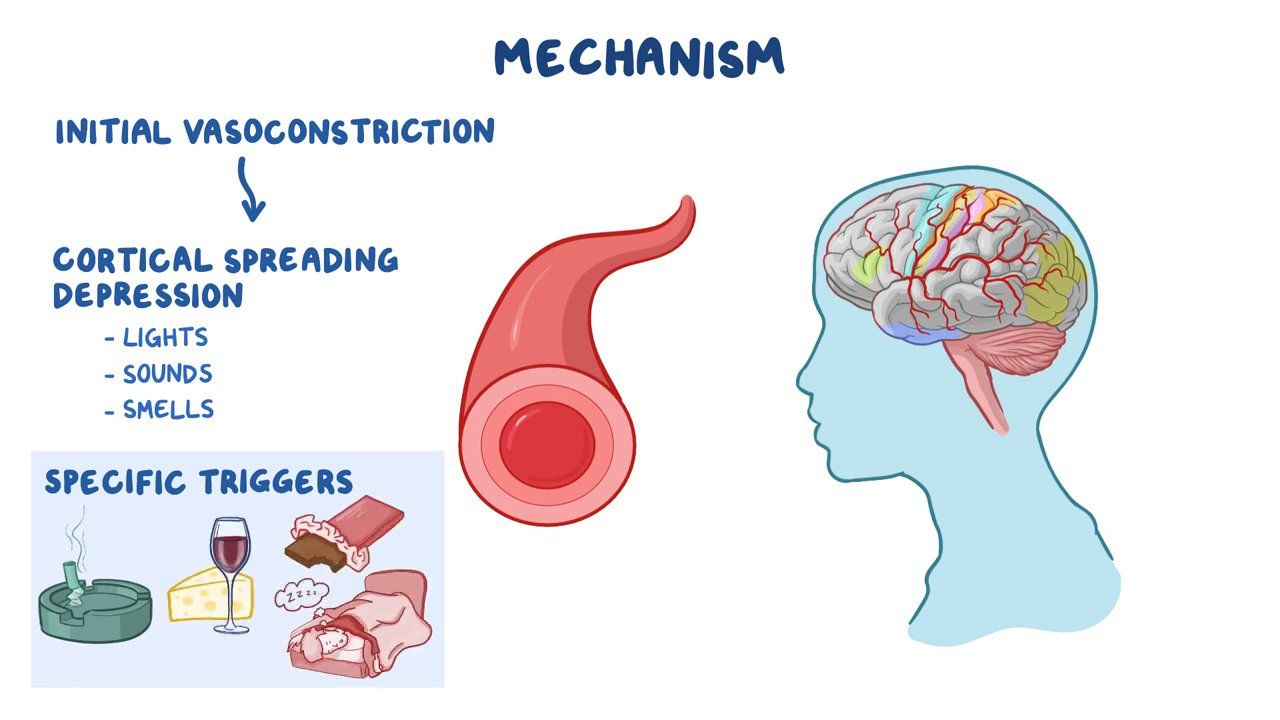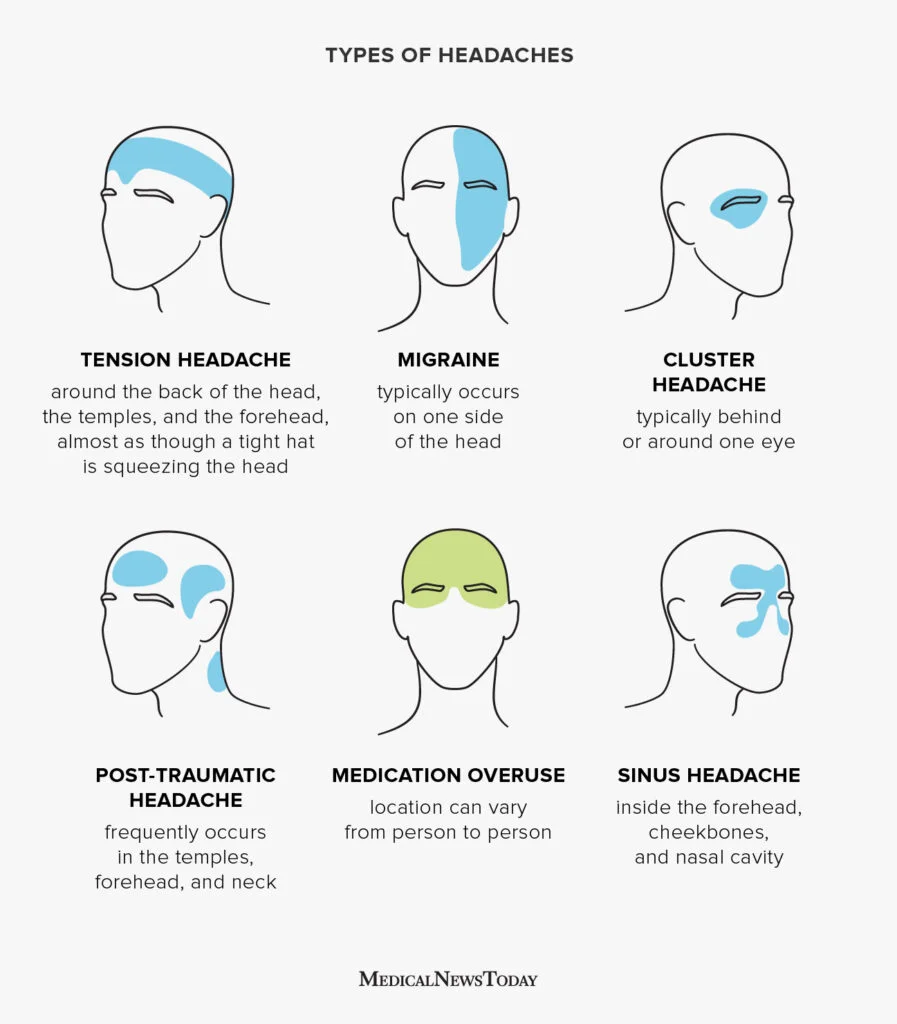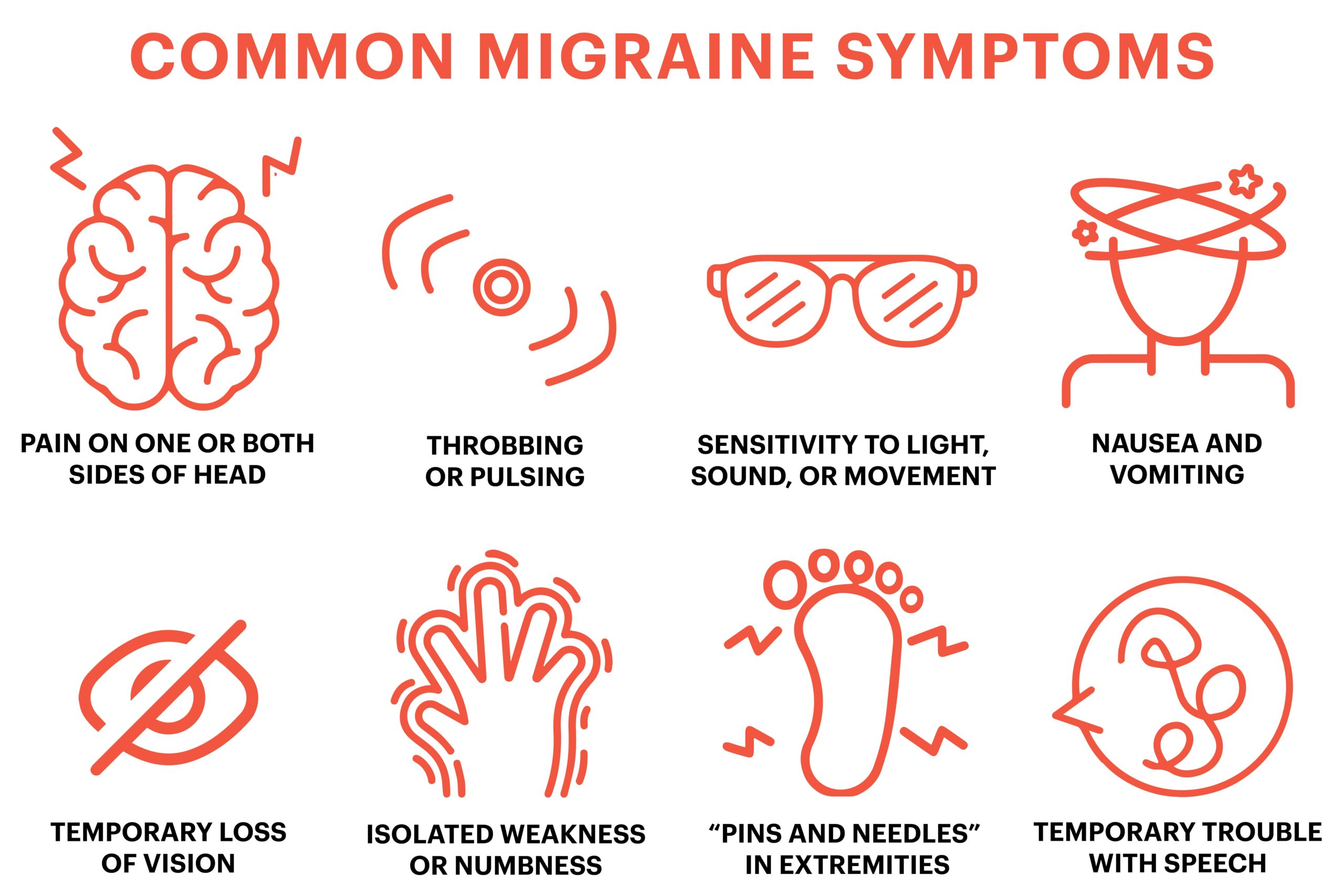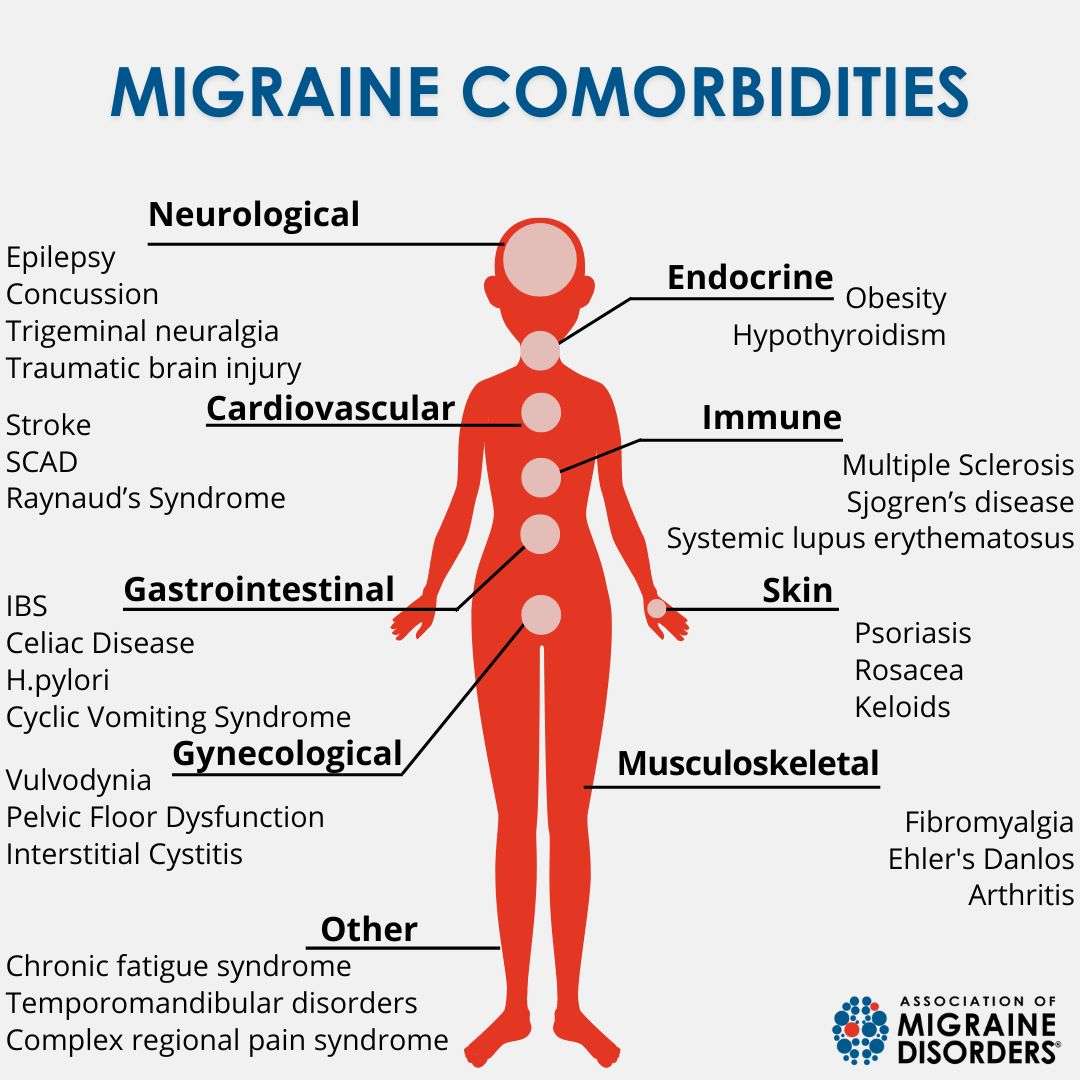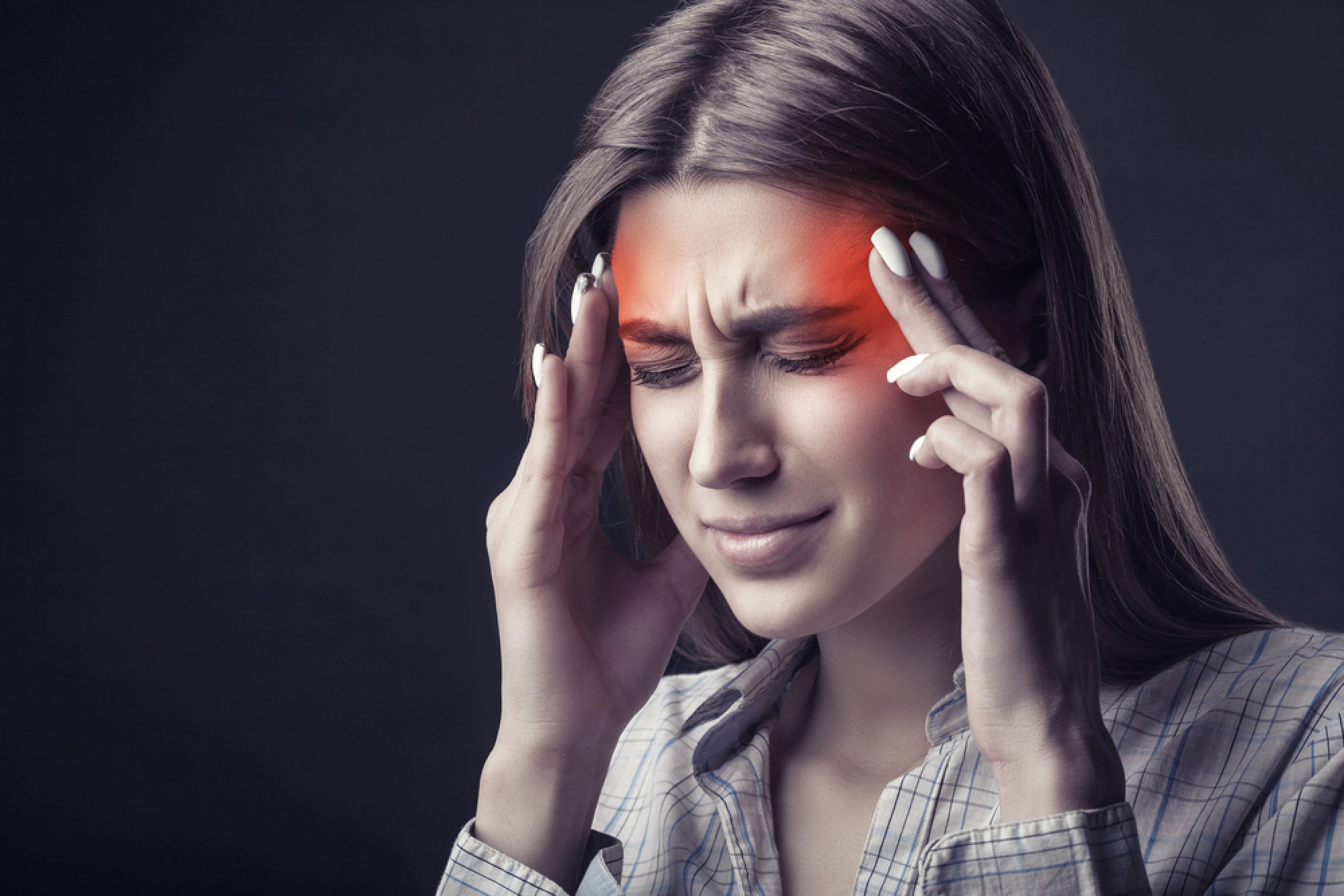
Key facts
- Migraine is a common problem, involving severe headaches, nausea, vomiting or sensitivity to light or sound.
- You might get an aura before the headache starts, where you may see flashing lights or have trouble talking.
- Migraine attacks can have many different triggers, such as stress, missing meals, eating certain foods, hormonal changes or not getting enough sleep.
- When a migraine attack starts, sleeping in a dark, quiet room and taking pain-relieving medicines straight away, may stop the attack.
- If you get migraines often, maintaining a healthy lifestyle and taking a preventive medicine can make them less frequent and severe.
What is migraine?
Migraine is a common problem affecting the brain. It usually involves severe headache accompanied by nausea, vomiting or sensitivity to light or sound. However, symptoms can vary depending on the type of migraine.
Migraine is a complex genetic condition, and symptoms are triggered by a combination of factors that may be biological and environmental. Triggers are unique to each person but can include food chemicals, smells, or hormones — resulting in a migraine attack. Migraine is more common in females.
‘Migraine’ is the term used to describe the condition, and ‘migraine attacks’ are the symptoms you feel during an episode. Migraine attacks usually come on from time to time. Some people have chronic migraine, with symptoms on most days.
What are the symptoms of a migraine?
Symptoms vary depending on the type of migraine you experience.
Common symptoms of migraine
You may feel unwell for up to a day beforehand.
Some people get an aura. This is a disturbance of vision, speech or sensation that occurs up to an hour before a migraine. You might see flashing lights, notice blind spots or zigzag lines in your vision. Some people find it hard to talk or hear ringing in their ears. The aura goes away by itself.
When the migraine starts, it is a severe, throbbing pain usually only on one side of your head. It gets worse with activity. It might hurt to see bright lights or hear noises. You might feel sick or vomit. This can last anywhere between 4 hours and 3 days.
A migraine can be so painful that everyday activities become impossible.
After the headache goes away, you might feel very tired or sick, or you might have lots of energy. You might feel better after sleeping or vomiting.
Although you may not experience all of these stages or symptoms, migraines generally occur in 6 phases:
- Premonitory (warning) phase: Warning signs include mood change, brain fog, nausea, aches and stiffness and speech difficulties.
- Aura phase: 1 in 3 people may experience visual disturbances, numbness, dizziness, confusion, difficulty speaking or abdominal pain.
- Acute or headache phase: Includes headache, nausea, vomiting, congestion, neck pain or sensitivity to light, sound and smell.
- Resolution phase: May be slow or sudden and includes need for sleep, fatigue or even euphoria (feeling good).
- Postdrome phase, or migraine hangover: This often includes brain fog fatigue and lack of comprehension, together with depressed mood.
- Interictal phase: This is the phase between attacks and is associated with a lack of attack symptoms.
Migraine aura without headache
Some people get an aura without a headache afterwards. They might feel sick or sensitive to light and sound.
Vestibular migraine
In vestibular migraine, the aura involves dizziness and loss of balance. It may not go away when the headache starts.
Abdominal migraine
Abdominal migraine involves attacks of abdominal (stomach) pain, vomiting, diarrhoea and other gastrointestinal upsets and does not always occur with a headache. It’s most common in children under the age of 7, with most children growing out of it by their teens. Children with a history of abdominal migraine may go on to develop other types of migraines with headaches as they get older.
Ocular (or retinal) migraine
In ocular migraine, there are changes in your vision — or even total loss of vision — in one eye. It goes away by itself. Vision is normal in the other eye. These symptoms usually happen before a headache, but not always.
Hemiplegic migraine
In hemiplegic migraine, the aura involves muscle weakness. This can last several days or weeks.
What causes migraine?
It’s not known exactly what causes migraine, although genetics have a role. It may be caused by temporary changes in blood vessels and chemicals in the brain.
You may be more likely to get migraine if:
- it runs in your family
- you have experienced abuse
- you have depression or anxiety
- you are living with obesity
Some people find that migraine is triggered by:
- missing meals
- certain foods, such as cheese, chocolate, citrus fruits, alcohol, coffee and food containing monosodium glutamate (MSG)
- too much or too little sleep
- changes in the weather
- hormonal changes, such as around menstruation or menopause
- too much screen use, bright lights, loud noises or strong smells
- stress and strong emotions
6 common migraine triggers

When should I see a doctor?
If you get severe headaches, see a doctor to work out what’s causing them and how to treat them.
If you have been diagnosed with migraine, see your doctor again if your headaches change or get worse.
Occasionally, headaches can be a symptom of something more serious. See your doctor immediately if you experience:
- a severe headache that comes on suddenly
- a headache that gets progressively worse over the course of several weeks
- a morning headache with nausea that doesn’t go away
- a headache that starts following an injury to your head
You should also see your doctor straight away if you have a headache accompanied by:
- fever
- neck stiffness
- confusion or a change in personality
- blurred or double vision
- loss of balance
- a seizure
How is migraine diagnosed?
Your doctor can diagnose migraine by talking to you and examining you. There is no specific test to diagnose migraine. However, your doctor may do tests to check for other causes of headache.
Keeping a migraine diary can help you understand when you get migraine attacks and what triggers them. This may help your doctor diagnose them and may also help you avoid triggers and prevent attacks. You may want to use these resources for keeping a migraine diary.
How is migraine treated?
There are many ways to manage migraine — both to prevent attacks and to treat an attack once it starts. Talk to your doctor about a migraine management plan. This will probably involve lifestyle changes and medicines.
Treating a migraine attack
During a migraine attack, rest in a quiet, dark room and try to sleep.
If you feel the symptoms of a migraine attack starting, you may be able to stop the attack by taking pain-relief medicines. The earlier you take them, the more likely they are to work.
You may need a combination of medicines, such as:
- anti-inflammatory medicines (NSAIDs) — for example, aspirin or ibuprofen
- triptans — this is a group of medicines that are especially good at treating migraine pain
- anti-nausea medicines
Some of these medicines are available over-the-counter from a pharmacy, while others require a prescription. Talk to your doctor or pharmacist about the best options for you.
It’s important not to take pain-relieving medicines too often since this can make things worse and lead to ‘medication-overuse headache’. If you need to take medicine several times a month, talk to your doctor about preventive treatments.
Can migraine be prevented?
There’s no known way to prevent yourself from developing migraine, but you can help prevent a migraine attack.
Preventing migraine attacks
There are some lifestyle measures and complementary therapies that may help prevent migraine attacks. These include:
- avoiding any triggers
- getting enough sleep
- eating a healthy diet and maintaining a healthy weight
- getting regular exercise
- acupuncture
- relieving stress through relaxation techniques, such as yoga and meditation, or psychological therapies such as cognitive behavioural therapy
- taking magnesium, riboflavin or coenzyme Q10 supplements
If you get more than 4 migraine episodes a month, your doctor might suggest you try a preventive medicine.
There are many different medicines that can reduce how often you get a migraine attack and how severe they are. They can be used for other health problems as well — some lower blood pressure, while others treat depression or epilepsy. However, you do not need to have these health problems in order to take them for migraine.
